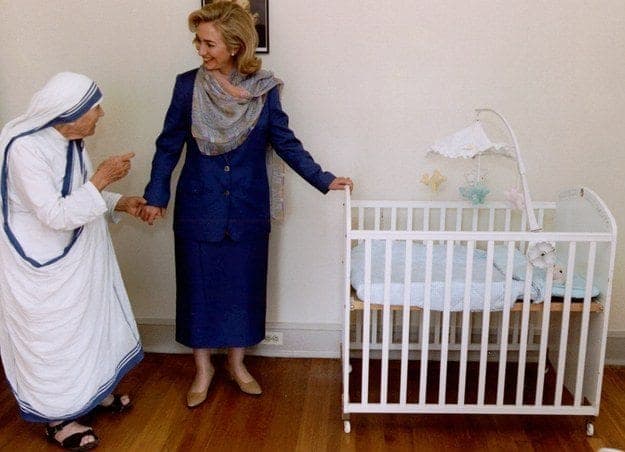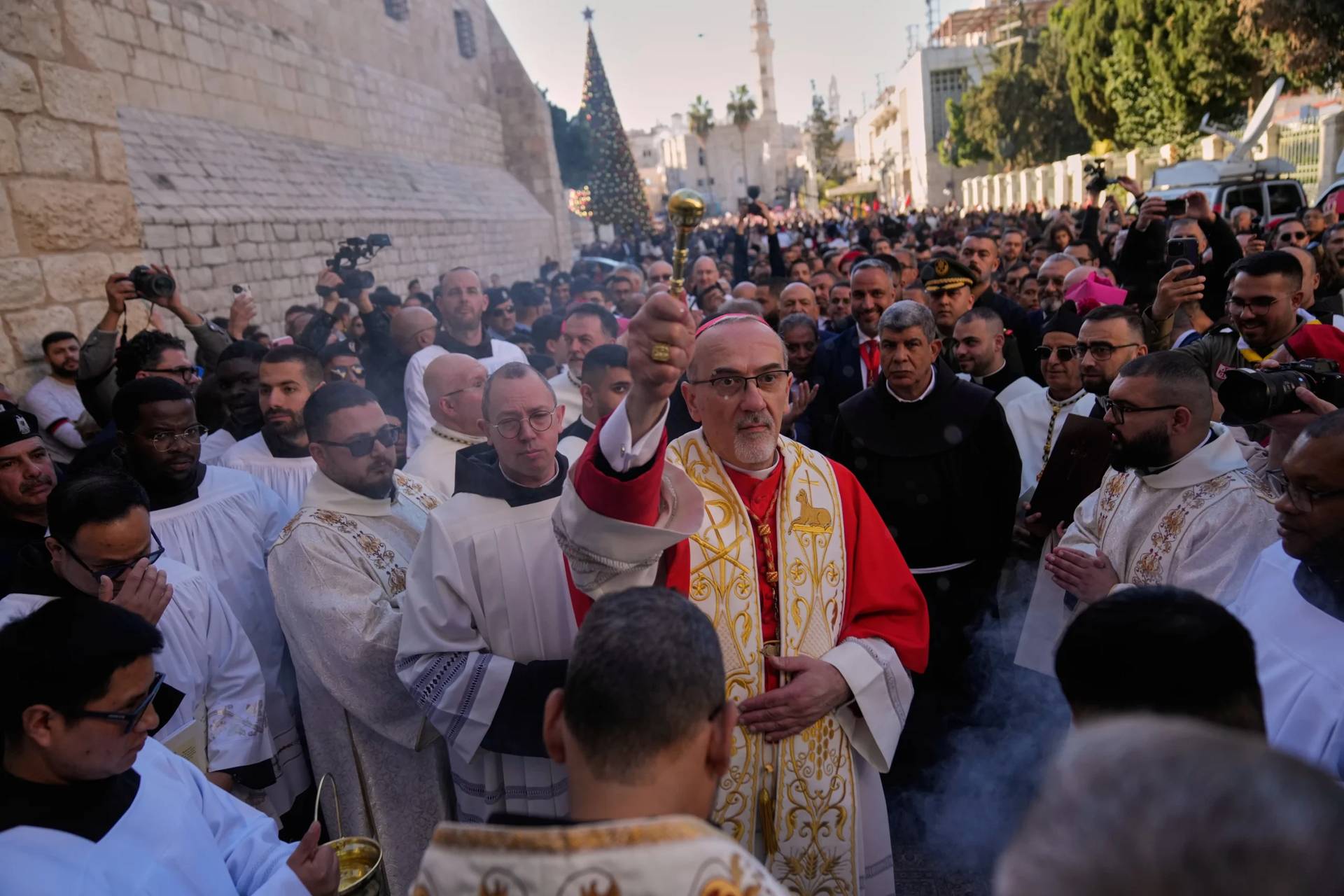At first blush, the idea of Hillary Clinton having much appeal for pro-life voters may seem a terribly long shot. A relatively little-known partnership between Clinton and Mother Teresa in the 1990s, however, suggests the fascinating possibility of altering the traditional political calculus.
In her July 26 speech accepting the Democratic nomination, Clinton reiterated her commitment to preserving social security, expanding social programs, fighting for children and their health insurance, and defending the disabled, working people, immigrants, women and the poor.
In many ways, those are precisely the same commitments Pope Francis celebrated in Mother Teresa when he formally declared her a saint on Sept. 4, and Mother Teresa and Clinton are linked by more than being accomplished women in what have long been men’s worlds.
In February 1994, Mother Teresa was invited to deliver a speech at the National Prayer Breakfast, an annual ecumenical and inter-faith event that happens every February in Washington D.C. The title of the speech was Whatever You did Unto One of the Least, You Did Unto Me, which was the core of Mother Teresa’s theology of mission to the poorest of the poor.
President Bill Clinton, Hillary Clinton, Al Gore, Tipper Gore and other dignitaries were among more than 3000 attendees. Clinton had invited Mother Teresa, and, according to her biographer Kathryn Spink, she went reluctantly.
Mother Teresa’s speech started on the common ground formed by what people of different faiths shared. She raised poignant social issues, including poverty, neglect, and the spiritual poverty which affluent countries were especially suffering.
Then she proceeded, with her usual humility and strength, to the topic that was dear to her heart: love of the child, where love and peace begin. Mother Teresa’s strong and straightforward pro-life message made national headlines, and was not music to the ears of everyone attending.
“The greatest destroyer of peace today is abortion, because it is a war against the child, a direct killing of the innocent child … Any country that accepts abortion is not teaching its people to love, but to use any violence to get what they want,” said Mother Teresa.
Yet identifying an issue was not enough. Mother Teresa also was not shy about offering a solution, which she and the Missionaries of Charity were successfully practicing internationally.
“I will tell you something beautiful. We are fighting abortion by adoption – by care of the mother and adoption for her baby. We have saved thousands of lives,” she said.
Mother Teresa’s controversial speech received a standing ovation from part of the room, while the Clintons and Gores remained silent in their seats. However, Mother Teresa was not done.
As Clinton would recall later, Mother Teresa asked to see her: “I thought, Oh, dear. And after the breakfast, we went behind that curtain and we sat on folding chairs.” It was the first time Clinton met Mother Teresa in person.
Clinton was highly impressed by this small, simple, direct and tough woman. She recalled Mother Teresa’s “powerful hands,” which were somewhat disproportional to her tiny and hunched body. Februaries in Washington are often cold, but Mother Teresa did not fear the 35-degree chill while wearing her sandals, Clinton would recall.
“We began to talk, and she told me that she knew that we had a shared conviction about adoption being vastly better as a choice for unplanned or unwanted babies,” Clinton said, admitting that Mother Teresa “directed” her to work with her to open a shelter for infants and young children.
Clinton is a practicing Methodist, someone who knows and has studied the Scriptures. She would later say that she considered Mother Teresa’s request for the home as coming directly from God.
“The message was coming not just through this diminutive woman, but from someplace far beyond,” she said.
To her credit, Clinton went straight to work helping to open a Mother Teresa Home for Infant Children in Washington. The road was bumpy, even for the First Lady. There was red tape, and the project took longer than expected.
Mother Teresa, for her part, was insistent, and did not lose sight of the goal. She would call the First Lady from time to time and ask for an update from India, Vietnam, or wherever else she might be.
In March 1995, as part of a South Asia tour, Clinton visited Mother Teresa’s orphanage in India to better understand the Missionaries of Charity’s approach to adoption. She was impressed with the adoption rates at the missionaries’ house.
Through Clinton’s work and dedication, in June 1995 the Mother Teresa Home for Infant Children was opened, with Mother Teresa flying in from Calcutta for the inauguration. The Los Angeles Times reported Clinton saying that the shelter “will grow to have meaning in people’s lives as lives here are saved and changed,” and she repeated her consistent stance that she would do everything she could to help children.
Mother Teresa, who was thrilled that the project came to a successful ending, said that she and the First Lady had made “amends” and found common ground to fight abortion through adoption. The home operated until 2002, five years after Mother Teresa’s death.
What to make of this relationship between a future Catholic saint and, possibly, a future U.S. president?
Just maybe, Mother Teresa’s canonization could prompt Clinton to revisit their exchanges from two decades ago, and consider making a pledge to fight abortion through adoption.
In a 1996 letter to Clinton, Mother Teresa wrote, “There is so much good you can do if you listen to God in the silence of your heart.” Is there any chance Hillary Clinton will follow Mother Teresa’s advice?

















